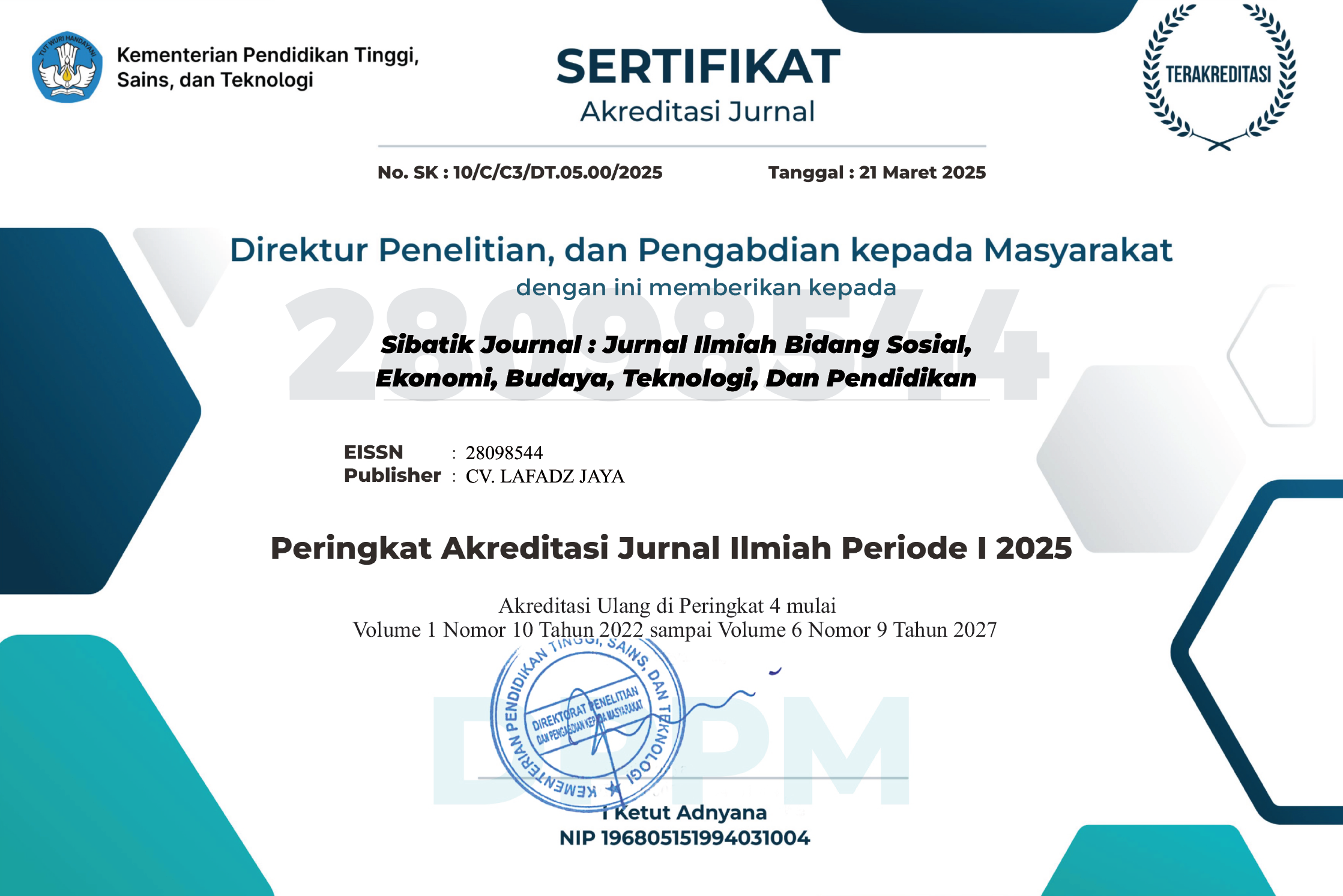INTERAKSI KEKUASAAN, BUDAYA, DAN PEMBELAJARAN DALAM MEMBENTUK STRATEGI ORGANISASI
Main Article Content
Brilliant Handyman Manalu
Amirul Mustofa
Eddy Yunus
This study aims to examine the influence of the interaction between power, culture, and learning in the formulation of organizational strategy. Power within an organization, which is distributed across various levels, affects who can make strategic decisions and how these decisions are accepted and implemented. Organizational culture, encompassing values, norms, and customs, plays a crucial role in determining how strategies are developed and executed. Organizational learning, as a continuous process of acquiring knowledge and experience, allows organizations to adapt to market and technological changes. This research employs a descriptive qualitative approach, utilizing document analysis and relevant literature studies. The results indicate that these three elements interact and significantly influence the formation of organizational strategies. Organizations that can effectively manage power, culture, and learning have a greater chance of formulating and implementing successful, adaptive, and sustainable strategies. However, a lack of harmony among these elements may hinder the effectiveness of the strategies implemented. Therefore, it is crucial for organizational leaders to understand these internal dynamics and ensure that these three elements support each other in strategy formulation and execution.
Argyris, C., & Schön, D. A. (1978). Organizational learning: A theory of action perspective. Addison-Wesley.
Ansoff, H. I. (1988). The new corporate strategy. Wiley.
Caldwell, C., & Dixon, R. D. (2021). Strategic management and leadership: Bridging the gap between theory and practice. Routledge.
Cook, J. (2020). Strategic leadership in Apple Inc: A case study. Journal of Business Research, 54(4), 16-23. https://doi.org/10.1016/j.jbusres.2019.04.022
Dahl, P. (2019). Power dynamics in organizational strategy development. Journal of Organizational Behavior, 40(3), 300-318. https://doi.org/10.1002/job.2364
Galunic, C. (2020). Harnessing the silent power of culture and norms. Springer.
Greve, H. R. (2021). Dynamic models of strategy formation. Strategic Management Journal, 42(8), 1350-1365. https://doi.org/10.1002/smj.3198
Henderson, D., & Kaufman, S. (2021). Netflix’s strategic management: Navigating the digital landscape. Journal of Strategic Management, 45(3), 45-58. https://doi.org/10.1108/JSM-06-2020-0292
Ingram, K. (2020). Power and culture in human-centric innovation ecosystems. Journal of Innovation Management, 6(2), 1-16. https://doi.org/10.12792/jmti.6.2.1
Kaufman, L., Clark, T., & Lee, S. (2022). Organizational learning and its impact on strategy formation at IBM. Journal of Business Strategy, 43(2), 22-31. https://doi.org/10.1108/JBS-07-2020-0164
Kaufman, L., & Zohar, E. (2021). Culture and leadership in strategic decision-making: Insights from the tech industry. Academy of Management Perspectives, 35(4), 65-83. https://doi.org/10.5465/amp.2021.0185
KPMG. (2020). Corporate culture and its role in driving innovation. Retrieved from https://home.kpmg/culture-innovation-report
Kuntz, J. R., Wong, S., & Budge, A. (2023). Health care management and organizational learning: Navigating through bureaucracy. Health Services Management Research, 36(1), 14-27. https://doi.org/10.1177/09514848211059456
McKinsey & Company. (2021). Driving cultural change to enable transformation. McKinsey & Company Insights. Retrieved from https://www.mckinsey.com/culture-transformation
Mintzberg, H. (1994). The rise and fall of strategic planning. Free Press.
Peters, T. J., & Waterman, R. H. (1982). In search of excellence: Lessons from America's best-run companies. Harper & Row.
PWC. (2020). The future of leadership in a changing world. PricewaterhouseCoopers Report. Retrieved from https://www.pwc.com/leadership-future
Quinn, R. E. (2019). Deep change: Discovering the leader within. Jossey-Bass.
Schein, E. H. (2010). Organizational culture and leadership. Wiley.
Smith, W., & Lewis, M. W. (2019). Strategic management: Theory and practice. McGraw-Hill.
Teece, D. J. (2017). Dynamic capabilities and strategic management: Organizing for innovation and growth. Oxford University Press.
Tushman, M. L., & O'Reilly, C. A. (2020). The ambidextrous organization: Organizational adaptability in a changing world. California Management Review, 43(4), 6-25. https://doi.org/10.2307/41165995
Vargas-Hernández, J. G. (2022). Relationships and strategic implications among organizational culture. Journal of Organizational Culture, 32(2), 12-25. https://doi.org/10.4018/978-1-7998-7793-6.ch007
Watkin, C., & Stone, J. (2020). Leadership, culture, and power in strategic decision-making. Journal of Business Research, 58(9), 1009-1018. https://doi.org/10.1016/j.jbusres.2020.05.029
Weick, K. E., & Quinn, R. E. (2021). Organizational learning: From organizational learning to knowledge management. Academy of Management Perspectives, 35(4), 235-248. https://doi.org/10.5465/amp.2020.0125
Westerman, G., & Tushman, M. (2021). The role of culture in organizational adaptability. Strategic Management Journal, 42(7), 1347-1364. https://doi.org/10.1002/smj.3254
Wong, K., & Lam, A. (2022). Leadership and culture in knowledge-based organizations. Knowledge Management Research & Practice, 20(4), 121-134. https://doi.org/10.1080/14778238.2021.1990186
Yukl, G. (2012). Leadership in organizations (8th ed.). Pearson.
Zhang, W., & Xie, M. (2022). Strategic power dynamics in organizational change processes: A comparative study. International Journal of Management Reviews, 24(3), 302-318. https://doi.org/10.1111/ijmr.12273
Zohar, D. (2021). The impact of organizational culture on strategic decision-making. Journal of Organizational Behavior, 42(3), 228-244. https://doi.org/10.1002/job.2566

























